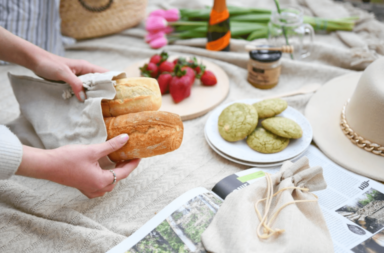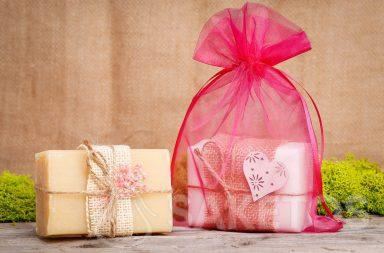Read on to find out what linen fabric is! Learn about its features which make it hugely popular and have so many different uses.
Linen is distinguished by its timeless elegance and never goes out of fashion! This unique fabric was created back in ancient times, find out what it was used for in the past and what it is still used for today. Learn all about linen!
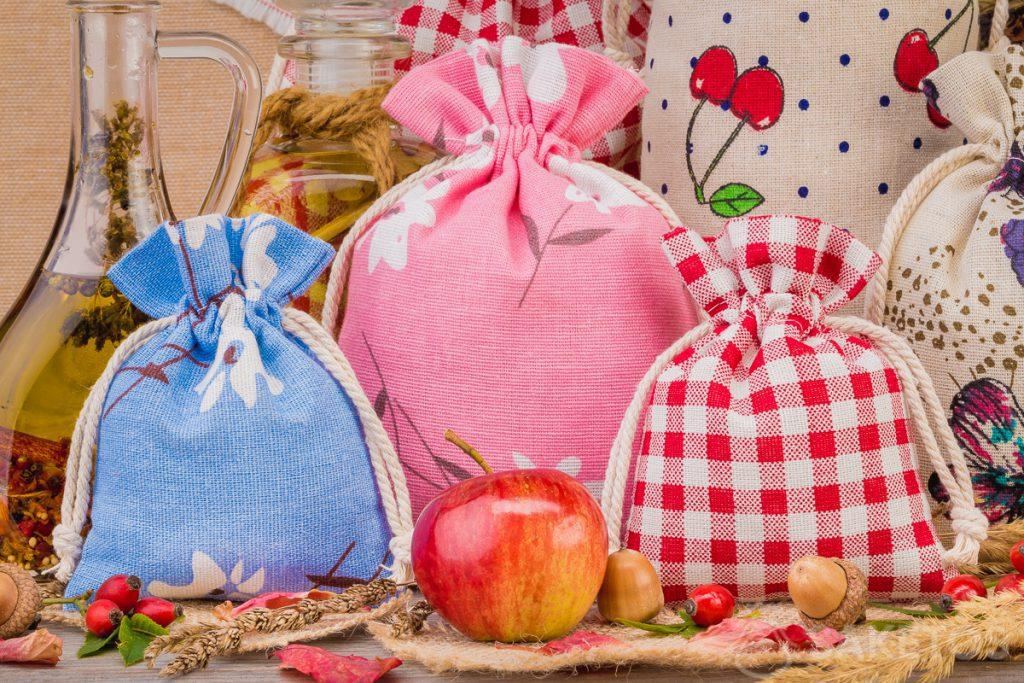
Linen bags with colourful prints for home decorations. An organza bag makes an elegant packaging option for a candle
What is linen fabric?
Linen fabric is created from the natural fiber of a flax stalk. The term ‘linen’ covers both fabrics made from the pure linen yarn as well as those blended with wool, cotton or polyester. Blending with other fibers helps to improve the characteristics of flax. For example, it can eliminate the fabric’s susceptibility to crease while remaining its breathability and durability.
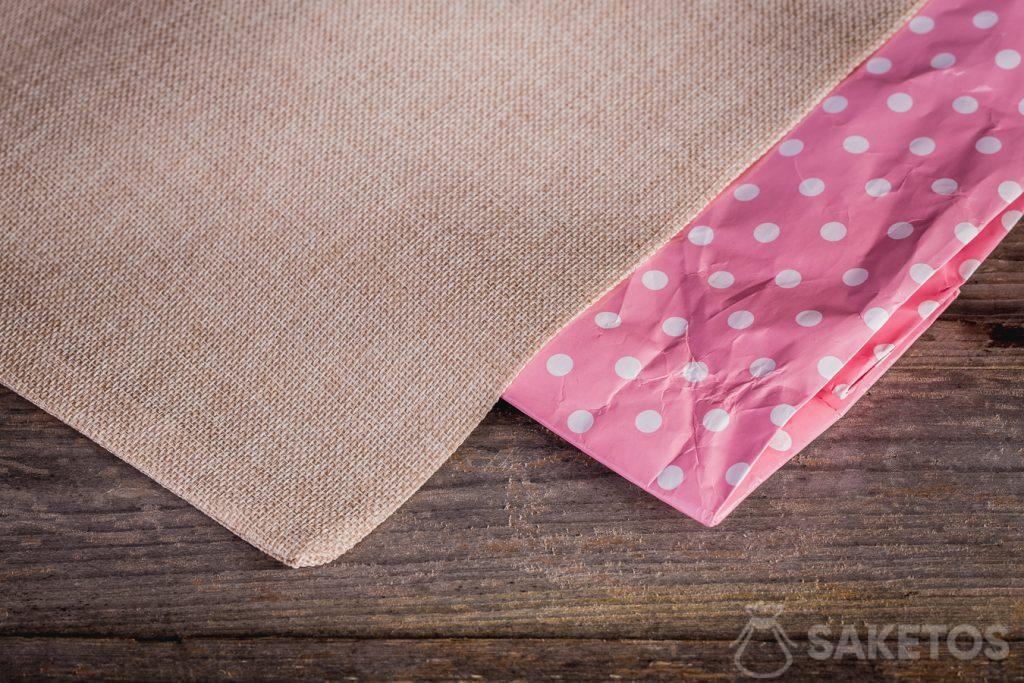
Fabric bags look better than paper bags
Characteristics of linen fabrics
Fabrics made from linen yarn possess a number of unique properties. Firstly, linen is naturally hypoallergenic as well as having antibacterial properties. Secondly, it is very strong and is resistant to damage from abrasion and stretching as well as being anti-static. It is also distinguished by its moisture absorbency and breathability. Linen fabric has excellent cooling properties which make it a popular fabric for summer clothing by helping to keep you cool.
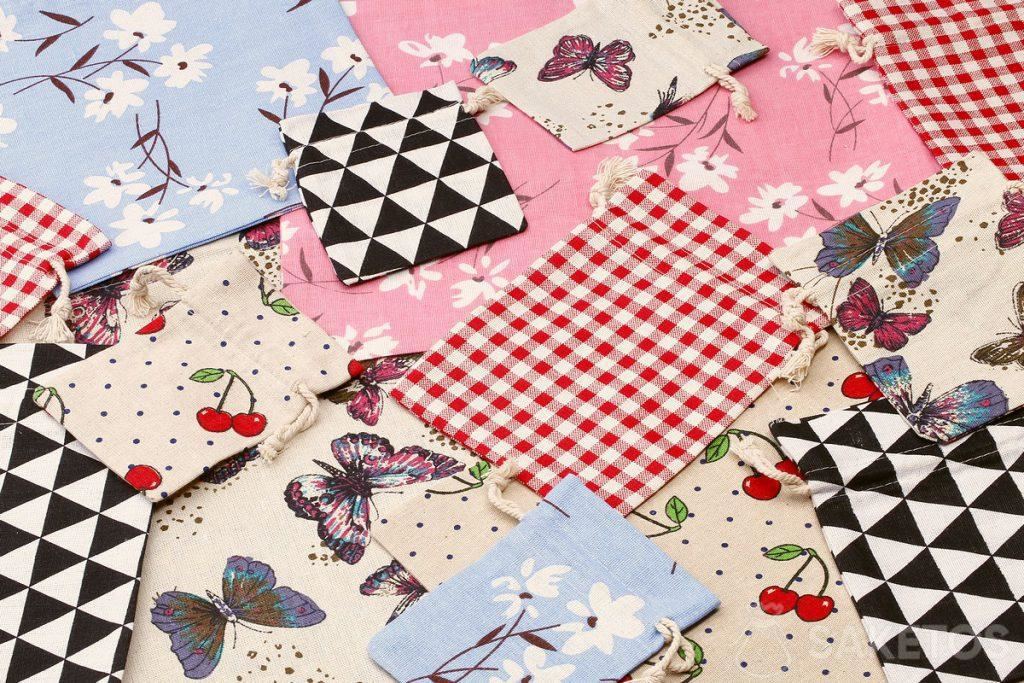
Linen bag tied with a decorative ribbon bow with a decorative pendant
The history of linen
The oldest linen fibers were found in Georgia. According to experts, the fabric made from them could have been used around 30,000 years ago! Linen fabric and tools for its creation were also found in present-day Switzerland. This finding dates back to around 8000 BCE. Archaeologists are certain that ancient Egyptians used linen, among other things, for mummification. Linen fabric was undoubtedly produced by ancient Greeks and Phoenicians as well.
Already in the Middle Ages, linen gained enormous popularity and was highly esteemed as a material throughout Europe. In the 17th century, Ireland led in its production. Although high-quality Irish linen now competes with lower-grade fabrics, many families still cherish the tradition of its production, of course, while embracing the benefits of modernity.
Currently, linen is produced on virtually every continent. Although it never really went out of fashion, linen has become increasingly desirable nowadays – not only for its properties but also because it is an eco-friendly product.
How to distinguish linen from cotton?
An experienced eye can differentiate between linen and cotton fibers under a microscope. However, there are several much simpler methods to determine which type of material we are dealing with. For example, you can lightly dampen the fabric. Linen quickly absorbs water, while cotton will allow it to pass through to the other side. It’s also worth examining the surface of the fabric and gently running your hand over it. In linen fabric, you won’t feel as many fiber ends, making it seem smoother. Linen is usually more lustrous as well, although some finishing techniques for cotton fabrics can achieve a similar effect. Specialists can distinguish these materials from each other through chemical tests.
An interesting fact is that linen gains in nobility over time: it becomes even softer, does not stretch, pill, or lint, which cannot be said about cotton, which loses its original brilliance over the years.
Uses of linen fabric
Linen material has been produced for thousands of years. Ancient Egyptians used to use it to decorate temples with and make clothes out of, including priests’ robes. Flax was also used to create sails for ships. Thanks to its antibacterial properties, it was even used to dress wounds in hospitals.
Nowadays, linen has even more uses, not surprising given its many useful characteristics. You will mostly see it being used in food storage, home textiles, interior design and the clothing industry.
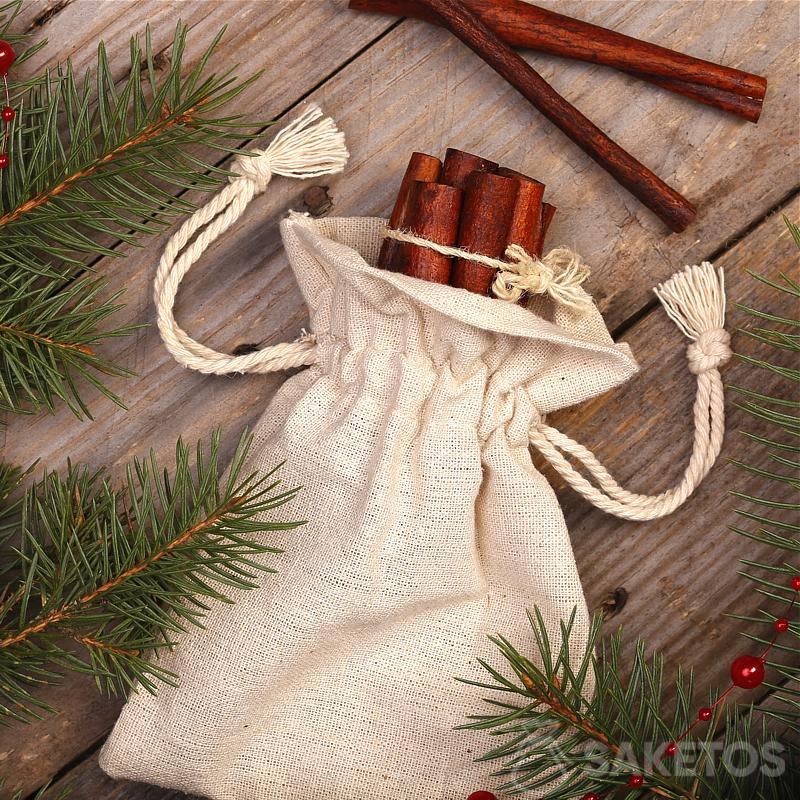
Jute bag is a beautiful rustic decoration
The use of linen within interior design and creating decorations for the home
Linen is great for sewing bedding and towels as it is a natural fabric so delicate on the skin.
This elegant yet practical material has been used to thousands of years in interior design. The possibilities are endless for home décor using linen, for example, larger items such as tablecloths, curtains and even furniture upholstery through to smaller decorative items such as pillows or napkins or bunting.
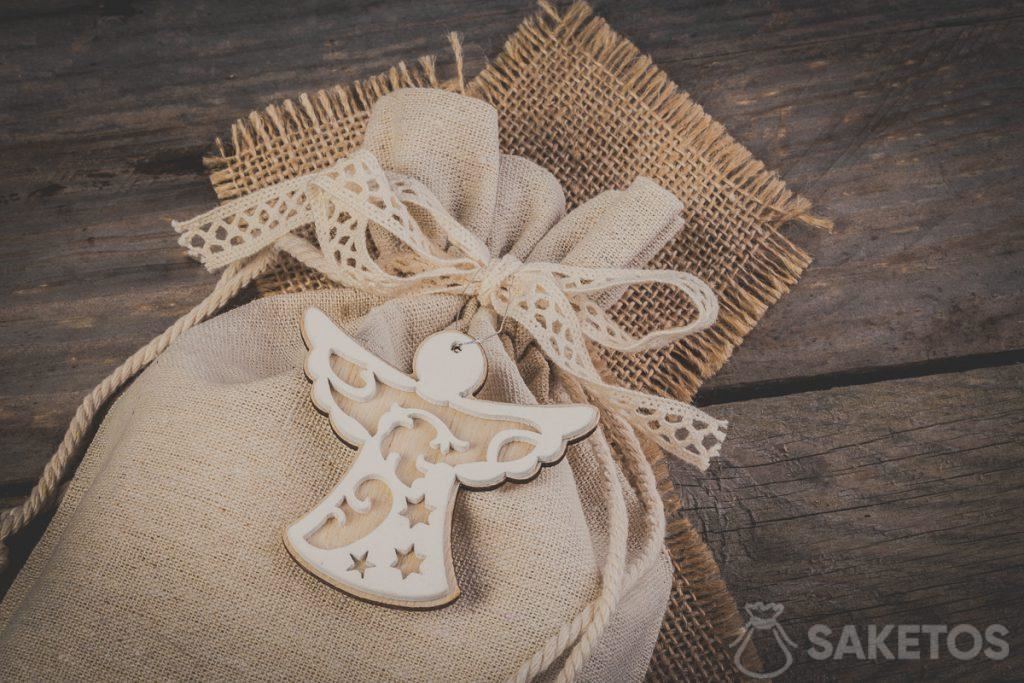
Jute bag is a beautiful rustic decoration
Linen bags
Bags made from linen material can also be unique and be used in various ways. They are ideal for storing small items in around the home, keeping them safe and concealed.
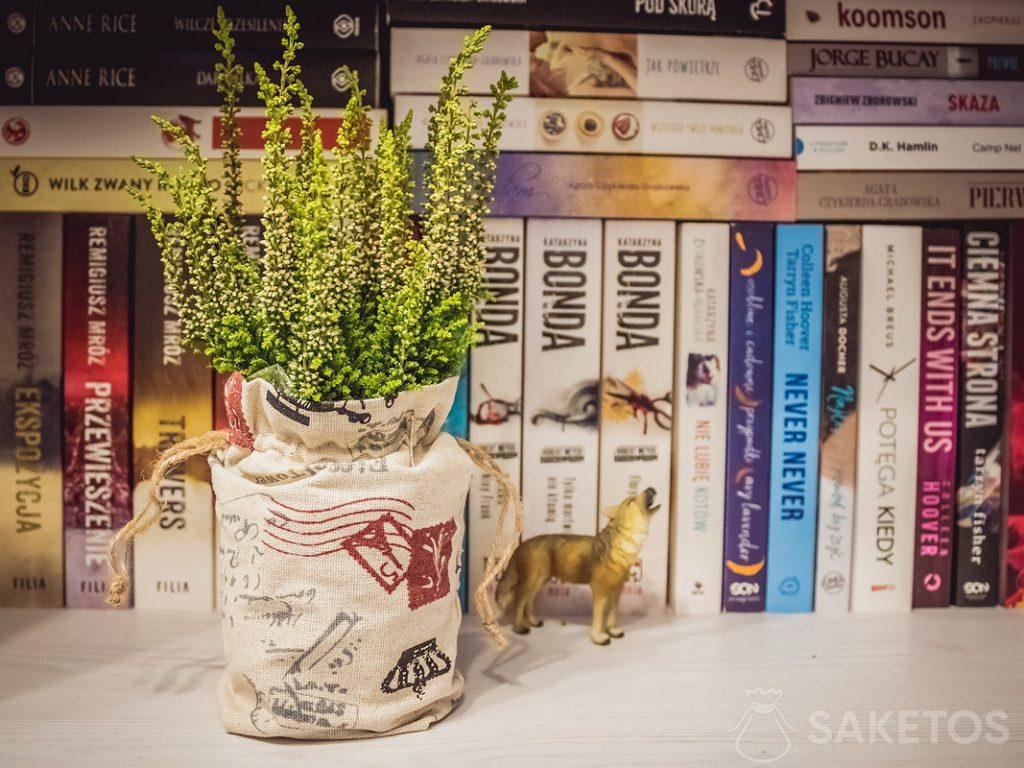
Linen bag with a decorative print as a flowerpot cover
For a design-led use, try using them to cover flower pots around the house. Alternatively, in winter, they can also be used to create rustic yet eye-catching Christmas decorations, such as an Advent calendar.
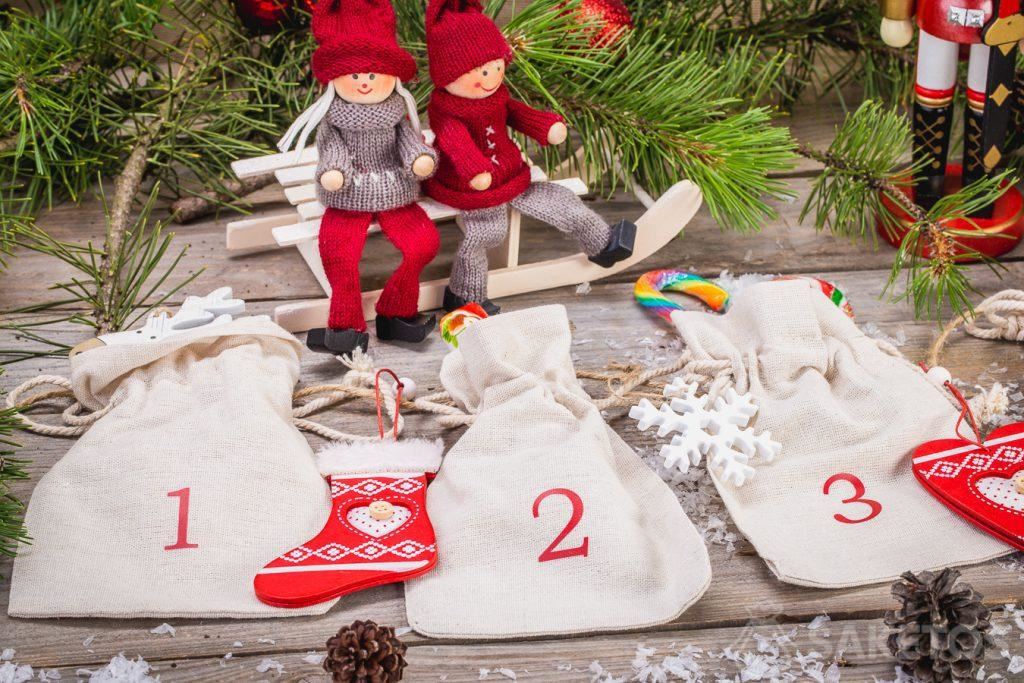
Linen bags allow you to create an Advent calendar in a rustic style
Where can I buy linen bags?
If we have inspired you with the many uses for linen bags then you will find a variety of linen bags in an array of sizes at our online store. We offer plain bags in a beautiful, natural linen colour as well as more striking colourful linen bags featuring decorative prints. Take a look for yourself and be amazed by our range!
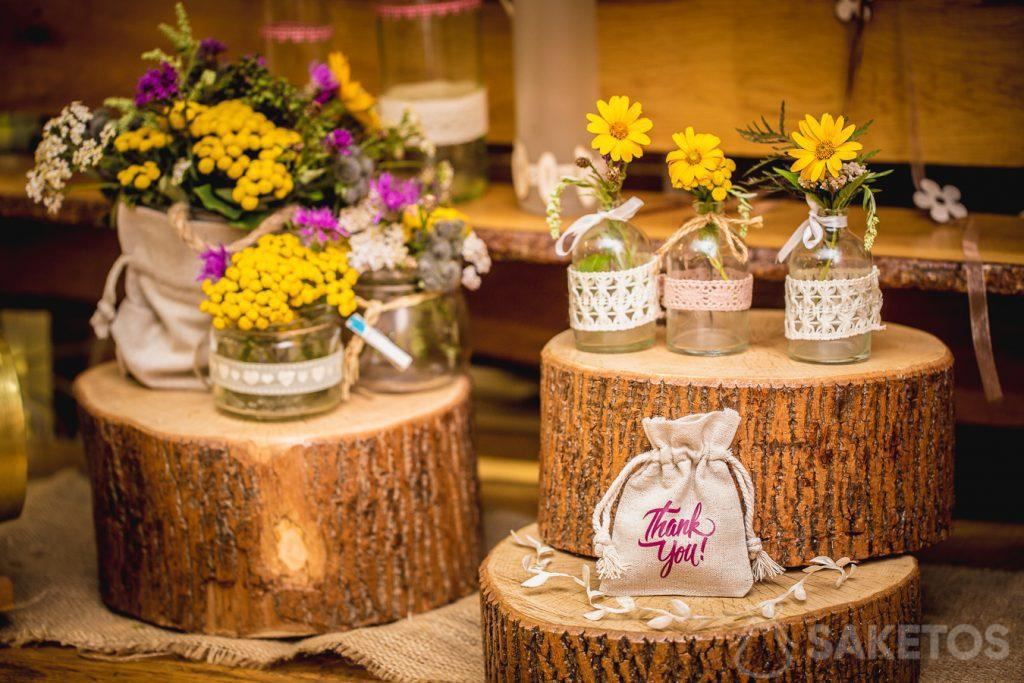
Linen bags as a decoration for flower pots and packaging for gifts for wedding guests
